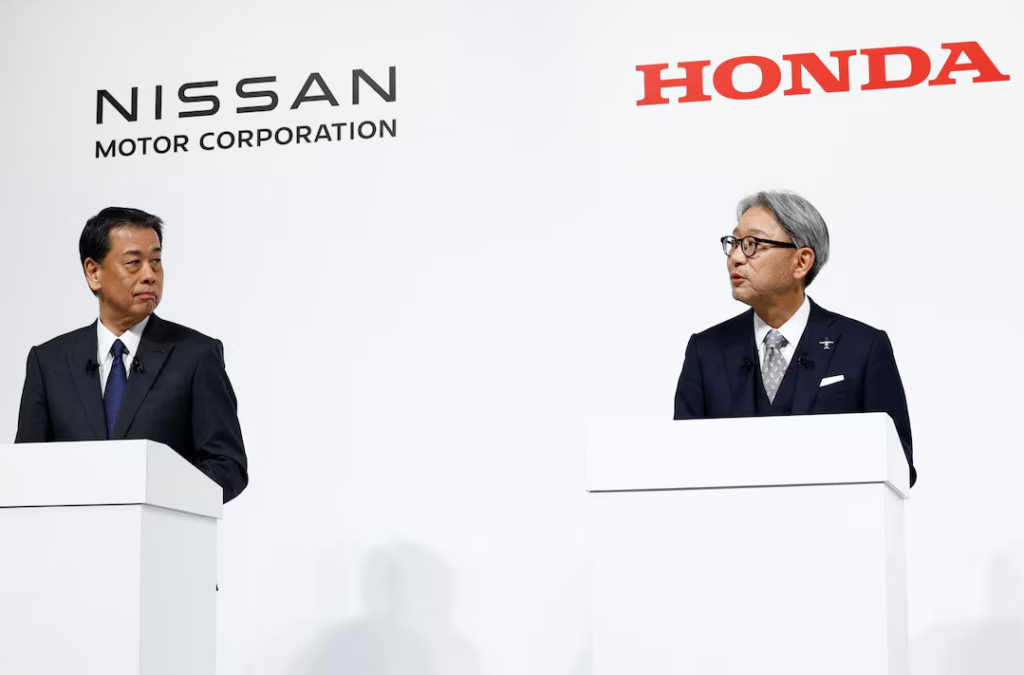|
Getting your Trinity Audio player ready...
|
The highly anticipated $60 billion merger between Honda and Nissan has fallen apart, marking a significant setback in the automotive industry’s race to adapt to rapid changes. According to Reuters, the deal collapsed due to Nissan’s “pride and insufficient alarm about its predicament,” as well as Honda’s last-minute proposal to make Nissan a subsidiary.
With Taiwanese electronics giant Foxconn now eyeing a stake in Nissan, the fallout from this failed merger could reshape the future of the auto industry.
Why Did the Merger Fail?
The merger, which aimed to create the world’s third-largest automaker, faced several critical challenges:
- Nissan’s Resistance: Sources cited Nissan’s pride and lack of urgency about its financial struggles as key factors in the breakdown.
- Honda’s Revised Terms: Honda abruptly proposed making Nissan a subsidiary, a move that reportedly soured negotiations.
- Cultural and Strategic Differences: The two Japanese automakers struggled to align their visions for the future, despite their shared goal of surviving industry disruptions.
The Broader Context: A Changing Auto Industry
The automotive industry is undergoing “dramatic changes,” driven by the rise of electric vehicles (EVs), autonomous driving, and shifting consumer preferences. Honda and Nissan had hoped to combine forces to better compete with global giants like Tesla and Toyota.
The merger would have also included Mitsubishi, which, along with French automaker Renault, is part of Nissan’s existing strategic alliance. However, the collapse of the deal leaves both companies to navigate these challenges independently.
Foxconn Steps In: A New Player in the Auto Game
With the merger off the table, Taiwanese electronics giant Foxconn has expressed interest in acquiring a stake in Nissan. Foxconn, known for manufacturing iPhones, has recently ventured into the EV market, signaling its ambition to become a major player in the automotive sector.
This development could open new opportunities for Nissan but also raises questions about the future of its alliance with Renault and Mitsubishi.
What’s Next for Honda and Nissan?
The failed merger leaves both automakers at a crossroads:
- Honda: Must continue its push into EVs and autonomous driving without the scale a merger would have provided.
- Nissan: Faces pressure to address its financial challenges and decide whether to partner with Foxconn or strengthen its existing alliances.
Conclusion:
The collapse of the $60 billion Honda-Nissan merger highlights the complexities of navigating a rapidly evolving automotive landscape. While pride and power struggles derailed the deal, the industry’s transformation continues unabated. As Honda and Nissan chart their separate paths, the rise of new players like Foxconn adds another layer of intrigue to the future of mobility.
